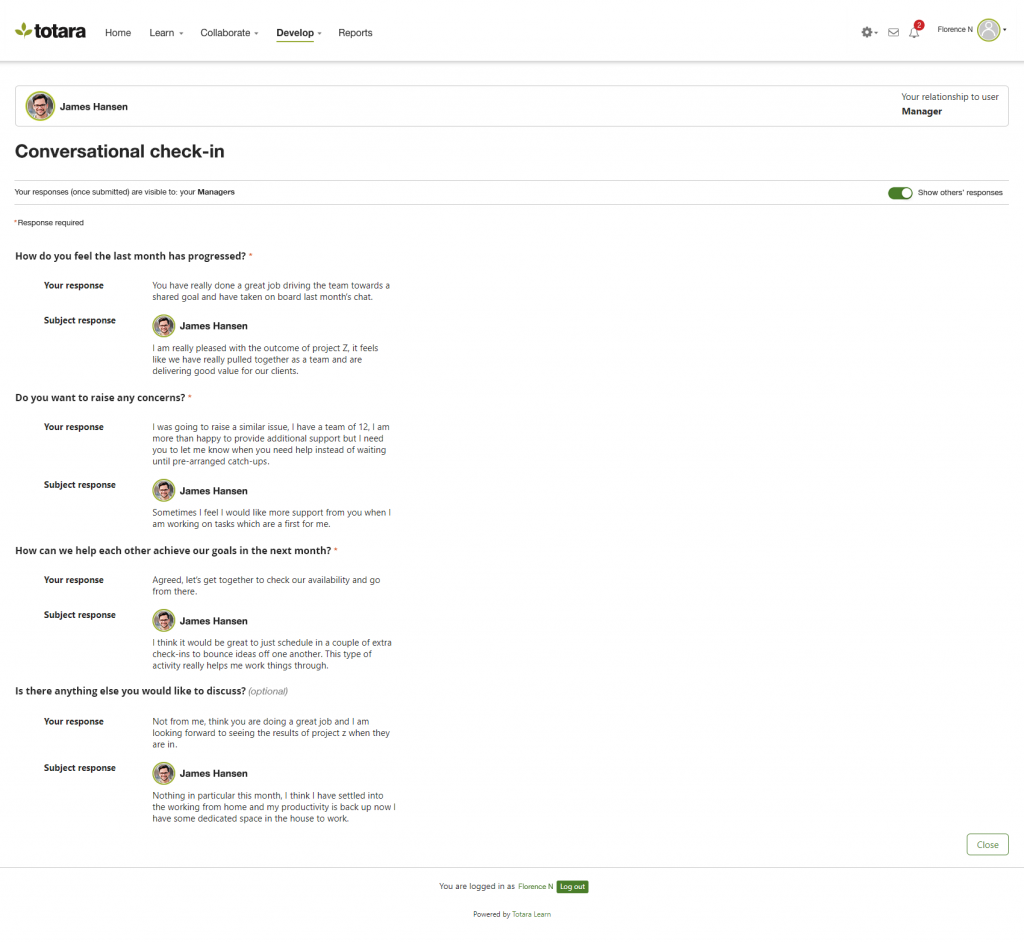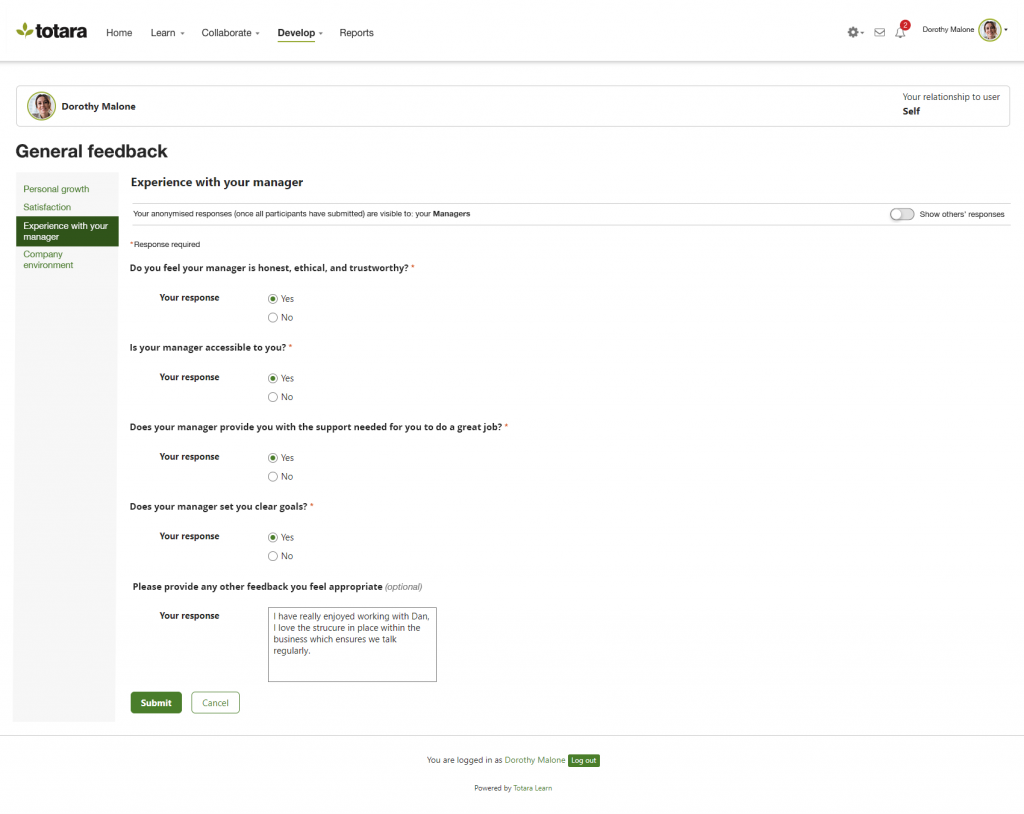The best-laid plans of mice and men often go awry. As the coronavirus pandemic has been a stark reminder, what you expect to happen and plan for in the future, may look drastically different from what actually pans out.
As you may have found out, being reliant on an annual appraisal process to plan employee performance and development goals, means you’re likely to be hit hard if things do change. So what can you do to help counter this threat, and ensure you’re able to respond at short notice?
Moving your performance management online is an obvious way to improve the efficiency of the whole process. But if you’re not in a position to do that straight away, there are a number of measures that you can look to adopt that will not only make your business more agile, but also have broader impact on your business too.
Redesigning the Performance Management Process
All too often an organisation’s performance management or performance development programme boils down to a single, formal activity that takes place once a year: the annual appraisal or review. (Personal Development Plan, anyone?)
Historically this was the time when an employee would get together with their manager to talk through how they had ‘performed’ over the past year, and set some new targets for the year ahead. Oftentimes, the outcome of this review would also dictate any pay rise, promotion or other HR intervention.
Even today, in many cases across the globe, and in organisations of all sizes, not much has changed. There may be the odd catch-up between managers and their line-reports, but often this is as a response to a performance issue – and the need for an intervention – rather than as a regularly occurring development opportunity.
However, business that do adopt more continuous performance management process report it as having a huge impact, as noted by Deloitte in their 2017 Global Human Capital Trends report:
“90 percent of companies that have redesigned performance management see direct improvements in engagement, 96 percent say the processes are simpler, and 83 percent say they see the quality of conversations between employees and managers going up.”
So, now we’ve looked at why you might want to make your performance management process more continuous, let’s take a look at some of the ways you can do so…
7 Elements of a Continuous Performance Management Process
1. Regular Goal Setting
As with all good learning & development strategies, a good performance management process starts with a business-wide plan. Without knowing what your overall performance goals are for the year, how do you know what your individual employees need to strive for?
Assuming you know what your overall plan is, setting performance goals is a relatively simple process: what does the individual need to do in order to be successful at their role – and how does this relate to the businesses overall objectives?
Ideally, these goals should be reviewed at regular intervals – quarterly, as a minimum – but with additional review sessions taking place as and when anything changes in the employee’s role, or the broader business plan. For example, they may be assigned to a new project team, be asked to take on additional leadership responsibilities, or the business may need to aggressively respond to a new challenger in the market.
Bear in mind however that, as noted by the CIPD, although continuous performance conversations are encouraged, it is best that the manager sets these goals, rather than involving the employee too directly.
2. Linking Performance to Formal Training and Development Plans
Training and development plans training and (informal) learning experiences are a given, but we still see that all too often these plans are created and reviewed separately from the performance process.
Linking an employee’s performance goals to their individual learning objectives, with relevant training programmes assigned to them to help them bridge any skills gaps and further develop existing skills has numerous benefits. Not least that in doing so, it ensures that the employee better understands why they are assigned certain programmes/courses, and makes them more likely to be engaged/motivated to complete them.
Similarly, looking at performance and learning together allows the identification of more general development opportunities – in communication, writing or project management, for example – that can help improve an employees overall value to the business, not just in direct relation to their role.
3. Mentoring Programmes and Coaching
Another growing trend is the introduction of mentoring programmes – either alongside or as an alternative to more formal coaching, or when a full training programme may not be necessary or a viable option.

Whereas mentoring is an on-going process where one person guides and imparts knowledge as part of an informal relationship built on mutual trust and respect, coaching may be much more structured and shorter in length.
You may already use “role shadowing” as part of your onboarding process, but mentoring can take on many guises, with employees being matched across teams and even departments or even countries.
The natural leaders in your teams already likely have the required listening, questioning and reframing skills needed to be successful as mentors. Coaches could be something you hire in to work with specific individuals, or perhaps you could set up an internal training programme?
Either way, both mentoring and coaching are a great way to provide hands-on performance support that can easily be introduced on an individual, or organisation-wide basis.
4. Check-Ins and One-to-Ones
It’s highly likely that as a manager you’re already having at least semi-regular catch-ups with your direct reports, albeit informally. But chances are, you’re not recording those conversations and they’re not being referred back to at all when it comes to more formal performance reviews.
“Feedback is the killer app”
– Josh Bersin
Scheduling regular performance check-ins and one-to-one conversations between managers and employees provides opportunities for giving – and receiving – feedback on both sides. This is hugely important, but is all too often forgotten about, with conversations defaulting to resolving project-related issues, rather than being used as a performance support tool.

Meaningful conversations are the key to effective performance management. So properly planning and recording these conversations, taking action on points that are raised, and ensuring they’re not viewed as “just another meeting” will immediately improve their effectiveness.
Again, if you don’t have an online performance management tool, at least documenting the notes from these meetings in a digital format makes it easier to keep track of past conversations and points for future discussion.
5. Performance Records/Evidence Logs
Related to the previous point, one of the biggest issues with the annual performance review is that they so often rely on the employee being able to remember all of the achievements they’ve had through the year – and having evidence to hand that backs it up.
Anyone familiar with UK secondary schools in the 1990s and early 2000s will be familiar with the National Record of Achievement. These portfolios of reports, certificates and extra curricular activities were used to demonstrate skills and achievements beyond exam results when applying to further educational facilities and potential employers.
Performance records play a similar role in the workplace – providing an ongoing body of evidence to support the claims made in formal and informal performance conversations, and potentially highlighting hidden skills and talents that may not otherwise be surfaced.
Employees keeping up-to-date evidence logs is something that comes naturally as part of a continuous improvement culture. Even without this pervasive practice being present in your organisation, creating an easy way for employees to log evidence of their achievements is a great start. Again, something as simple as an online spreadsheet accessed via their learning portal is an easy way to start phasing in the new practice.
6. 360-degree feedback
Gathering feedback from peers, direct reports and more senior colleagues (even customers in some instances) enables managers to deliver much more objective, rounded performance reviews, taking into account a wide range of relationships and opinions.
Again, 360-degree feedback isn’t a new concept in and of itself, but it’s surprising how many organisations still haven’t adopted the practice, and even when they have, that it’s only done periodically rather than continuously.
Providing a way to request and supply anonymous feedback at any time – rather than just during a given period every 12 months – helps to overcome any unconscious, proximity, or recency bias managers (and other feedback-givers) may have. Resulting in not only more balanced profiles, but also opportunities to recognise where interventions may be needed that otherwise may have gone unnoticed, or forgotten about.

If you’re already using 360 feedback, consider whether you can adapt your existing surveys to keep them open year round, or whether it’s possible to introduce shorter, more regular feedback opportunities.
7. Formal Appraisal/Review
Ok, so we said that we’re moving away from the annual appraisal, but that doesn’t mean you should be dropping performance reviews entirely. On the contrary, if anything you might want to increase the frequency with which they take place.
As we discussed above, feedback is heavily impacted by a number of biases, and this is one of the main reasons that employees see annual appraisals as being unfair. Introducing more regular feedback opportunities will help overcome these challenges.
Moreover, more regular reviews help shift the long-held negative mindset of employees being held to account for past behaviours and a heavy emphasis on financial reward and punishment. And it’s this change in mentality above all else, that will help deliver the performance improvements that your business needs.

Adopting a More Continuous Performance Management Process
If you’re still mostly managing performance in a yearly appraisal, there’s no need to take on everything all at once – just start introducing new elements over time, adapting a more continuous, pervasive process as you go..
In fact, we don’t recommend that you do try and implement everything in one go especially if you have a large workforce and/or a long established performance management process that you’re looking to change. Changing culture takes time, afterall.
Introducing one or two new elements and then building further changes into the process as they become the ‘norm’ is a good place to start. Just figure out what you’re able to do without any further investment, and start there.
Then, when the time is right, you can move the whole process online, integrating it with your learning management system for even greater efficiency and benefits.
Check out the Performance Management features of Totara Perform – check ins, 360 degree feedback and appraisals.
If that’s something you’re ready to explore, we’re here to help – just get in touch and we’ll talk you through the options.
What does performance management look like in your business? Let us know what would make the biggest difference to you in the comments

Comments ( 0 )